Understanding Energy Consumption Patterns in Tropical Buildings
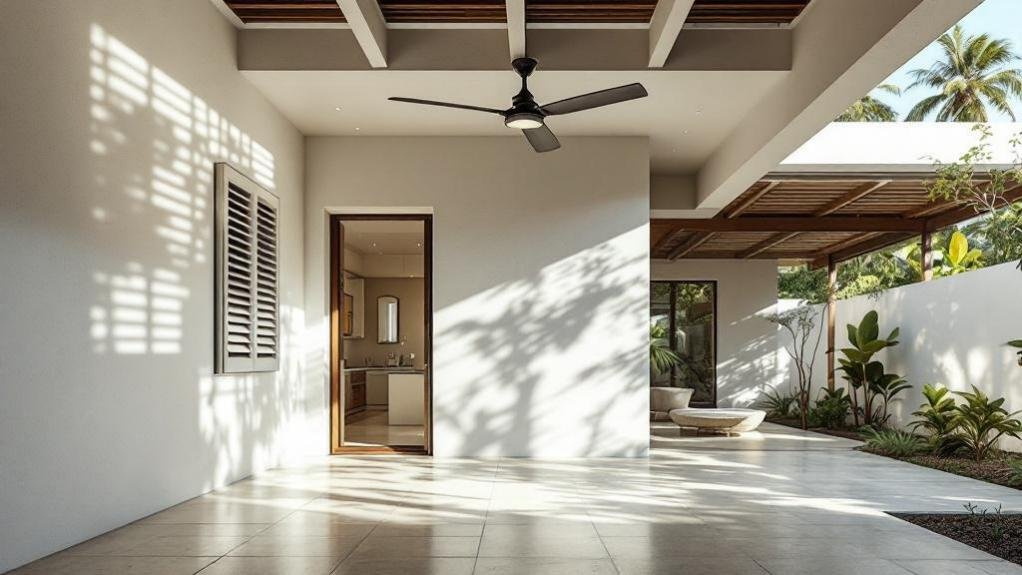
When you’re designing or improving a building in a tropical climate, you’ve got to understand how much energy it actually uses for cooling—and that starts with knowing what affects those numbers.
A building’s shape matters tremendously. The surface-to-volume ratio ranges from 0.19 to 0.47, directly influencing your energy performance. Buildings with more exterior surface relative to interior space lose more heat, demanding stronger cooling strategies.
Cooling loads typically consume 43.0 to 57.1 kWh/m², while heating barely registers at 0.58 to 2.65 kWh/m². You’re fighting heat, not cold.
Understanding these patterns helps you make smarter choices. When you know what consumes energy, you can target improvements effectively.
Simulation models show strong correlation with real-world data, proving these numbers guide genuine savings.
The Science Behind Hybrid Cooling Systems
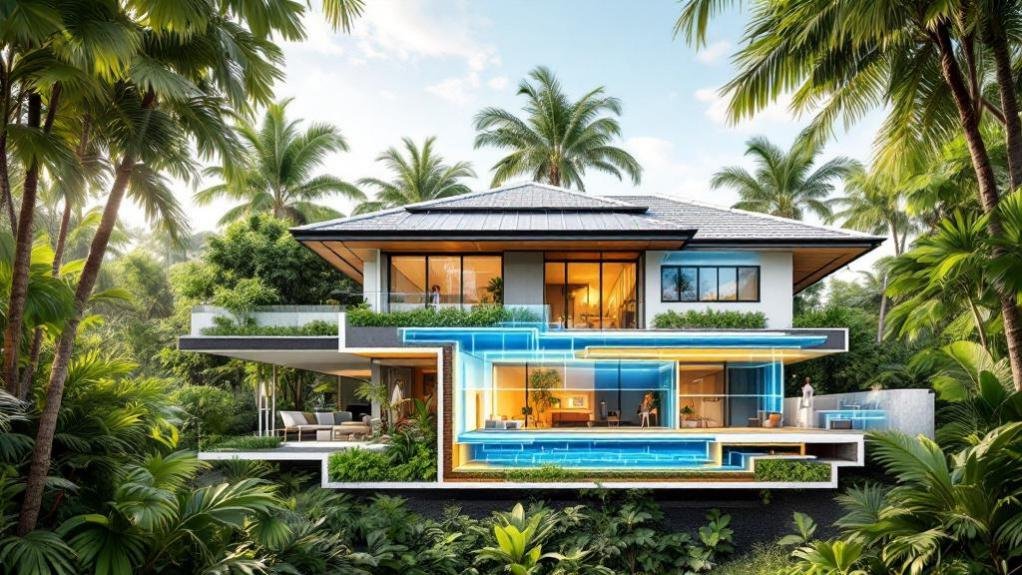
Hybrid cooling systems pair air conditioning with ceiling fans to slash your energy bills by up to 32% while keeping you comfortable.
You can bump your thermostat from 24°C to 26.5°C and let fans circulate cooler air around your home, cutting electricity use without sacrificing comfort.
The beauty of this approach is that it maintains your thermal satisfaction—so you’re not trading comfort for savings.
How Hybrid Systems Work
Because traditional air conditioning uses enormous amounts of energy, scientists and engineers’ve developed a smarter approach that combines AC with ceiling fans to cut your cooling costs considerably.
This hybrid technology works by using energy integration—pairing your air conditioner with ceiling fans to distribute cool air more efficiently throughout your home.
Here’s how it operates: you set your thermostat higher, say 26.5°C instead of 24°C. The ceiling fans then circulate air, making you feel just as comfortable while your AC runs less frequently.
This tag-team approach reduces energy consumption by up to 32 percent in tropical buildings.
You’ll notice the difference immediately. Your electric bills drop greatly, yet you maintain complete thermal comfort.
It’s straightforward, effective, and increasingly popular among homeowners seeking sustainable cooling solutions.
Energy Savings and Comfort
The science behind why hybrid cooling works so well comes down to how your body perceives comfort and how efficiently fans move air around your home.
When you pair air conditioning with ceiling fans, you’re creating something powerful: a system that uses less energy while keeping you just as comfortable.
By raising your thermostat to 26.5°C instead of 24°C and running fans simultaneously, you’ll save up to 32% on cooling costs.
Fans circulate air effectively, making rooms feel cooler without working your AC harder. Smart thermostats help you manage these settings automatically, while energy efficient appliances reduce overall consumption.
You’re not sacrificing comfort here—you’re gaining it.
This approach maintains thermal satisfaction while slashing your electricity bills and environmental impact.
Rising Cooling Demand and Climate Change Implications
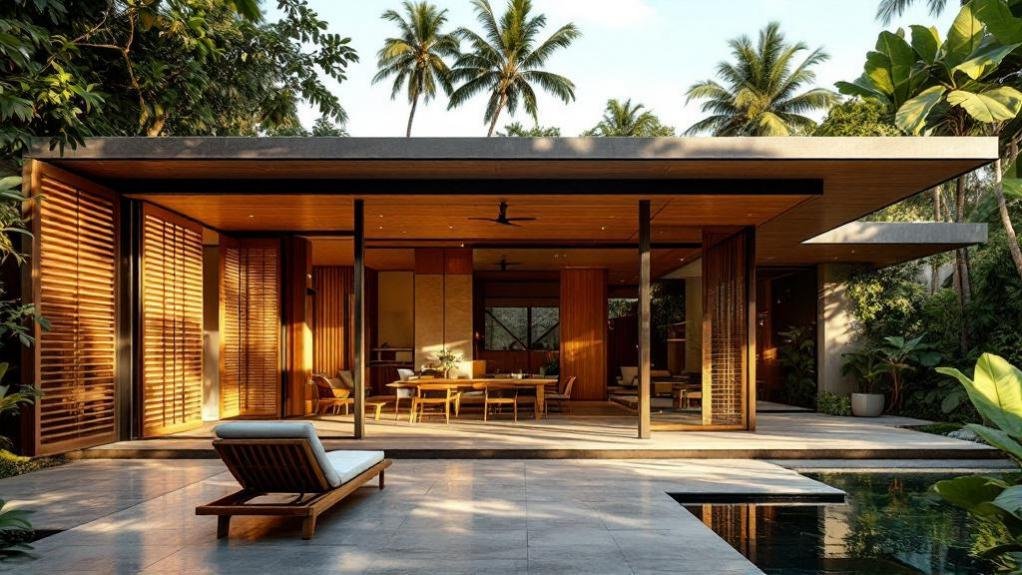
You’re watching cooling demand skyrocket across the country, with household air conditioning use projected to jump 71% by 2050 as climate change pushes temperatures higher.
Since 1970, cooling degree days have climbed in 97% of U.S. locations, meaning you’re facing longer, hotter summers that make your AC work overtime.
This surge in cooling needs creates real challenges for your energy bills and the environment—especially if you’re already struggling with costs in hot regions like the Gulf Coast, where some families spend up to 27% of their income on cooling alone.
Cooling Demand Projections
As temperatures climb across the United States, you’re witnessing a dramatic shift in how much energy we need to keep our homes and offices cool.
Cooling demand is projected to increase by 71% by 2050, driven by rising temperatures and more frequent heat waves. You’ll notice cooling technology trends are already changing—newer air conditioners use less electricity while keeping spaces comfortable.
Energy efficiency innovations like smart thermostats and hybrid cooling systems help you reduce consumption without sacrificing comfort.
In tropical regions, this shift’s even more pronounced. The Southwest, South, and Southeast face the largest increases in cooling needs.
Understanding these projections helps you make informed decisions about upgrading your home’s cooling systems today, preparing for tomorrow’s hotter climate while managing energy costs effectively.
Climate Change Impact Acceleration
While cooling demand rises across the nation, climate change itself is accelerating the problem—creating a troubling cycle that demands your attention.
Warmer temperatures increase cooling degree days, which in turn boost your air conditioning use. This creates a climate feedback loop: more cooling means more electricity consumption, which generates additional greenhouse gas emissions that further warm the planet.
Urban heat islands intensify this effect. Cities absorb and trap heat, pushing temperatures even higher than surrounding areas. You’ll notice that cooling demands spike in these densely built regions.
The reality is stark: your cooling needs will likely grow substantially over the coming decades.
Understanding this connection helps you make smarter choices today—choices that protect both your home and our climate tomorrow.
Optimizing Thermal Comfort Without Excessive Energy Use
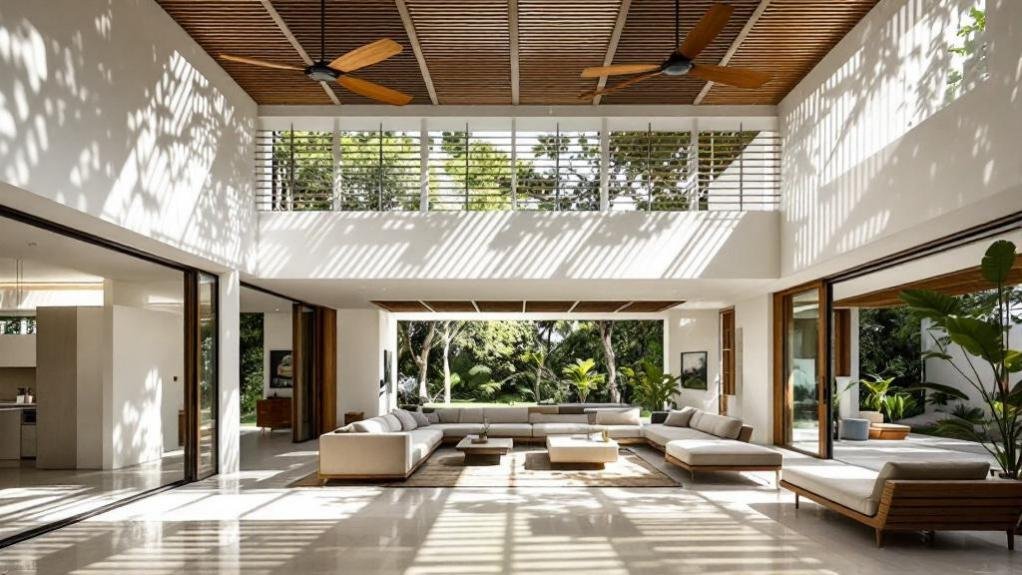
Finding the sweet spot between staying cool and keeping your energy bills reasonable isn’t as hard as it sounds. You can achieve thermal comfort while boosting energy efficiency through smart adjustments. Research shows that raising your thermostat just slightly makes a real difference without sacrificing comfort.
| Temperature (°C) | Energy Savings | Comfort Level | Action |
|---|---|---|---|
| 24 | Baseline | High | Standard setting |
| 25 | 10-15% | Good | Slight adjustment |
| 26 | 20-25% | Good | Moderate change |
| 26.5 | 30-32% | Maintained | Ideal hybrid approach |
| 28-31 | 40%+ | Acceptable | Tropical standard |
You’ll discover that pairing air conditioning with ceiling fans creates powerful savings. This combination lets you feel comfortable at higher temperatures while reducing electricity use. Your wallet and the planet both benefit from these straightforward changes.
Building Design Strategies for Enhanced Cooling Efficiency
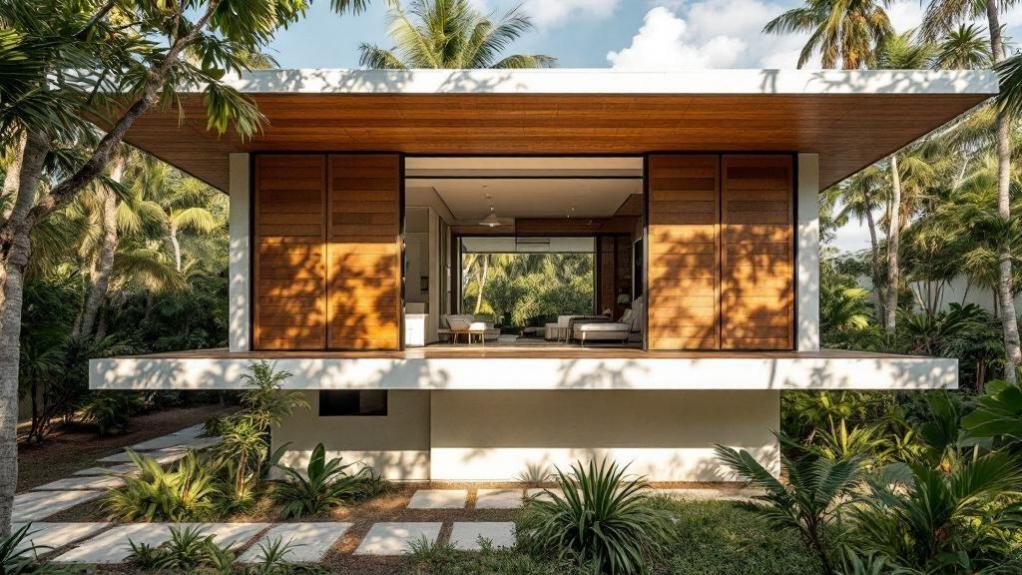
The way you design and build your home matters just as much as the temperature you set on your thermostat.
Your home’s shape and layout directly influence how much cooling energy you’ll need. Buildings with lower surface-to-volume ratios require less cooling overall. You can achieve this through compact, efficient floor plans.
Buildings with lower surface-to-volume ratios require less cooling. Achieve this through compact, efficient floor plans.
Strategic shading techniques—like deep eaves, exterior louvers, and planted trees—block intense sun before heat enters your home.
Natural ventilation through cross-ventilation and window placement lets breezes flow through spaces, reducing air conditioning reliance.
Thermal mass materials such as concrete or tile absorb daytime heat and release it at night when temperatures drop.
Passive design combines these elements naturally. Together, they’ll slash your cooling costs considerably while keeping your home comfortable year-round.
Policy Innovations and Efficiency Standards

Building design strategies get you halfway there, but you’ll need support from the bigger picture to make sustainable cooling truly work. That’s where energy policies and efficiency innovations come in.
Governments are stepping up with meaningful changes:
- New air conditioner standards taking effect in 2026 will lower your electricity bills.
- Energy policies encourage retrofitting homes with better windows and insulation.
- Efficiency innovations make electrified cooling systems cheaper than fossil fuel alternatives.
- Local programs help low-income households access affordable cooling technology.
You’ll benefit from these shifts directly. Standards push manufacturers to create better equipment.
Policies make upgrades more affordable. Together, they create a foundation where your personal cooling choices matter even more, turning individual efforts into community-wide progress toward sustainability.
Environmental Impact of Cooling Solutions and Sustainable Alternatives

As you choose a cooling solution for your home, consider what happens after the cool air flows from your vents. Your decisions affect the planet’s health.
Traditional air conditioning drives up electricity demand, and since fossil fuels generate about 60% of U.S. electricity, your cooling choices contribute to greenhouse gas emissions.
Fortunately, cooling alternatives exist. Hybrid systems pairing air conditioning with ceiling fans cut energy use by 32%. Raising your thermostat to 26.5°C saves considerably without sacrificing comfort.
These sustainable materials and approaches reduce your carbon footprint.
Building sector emissions have doubled since 1970 and will likely double again by 2050. Your home matters.

Robert writes Arahkaii’s Living & Travel stories with a focus on meaningful experiences, thoughtful exploration, and the quiet beauty found in everyday life. Blending practical insight with a storyteller’s eye, he highlights destinations, home rituals, and lifestyle perspectives that encourage readers to slow down, savor the moment, and travel with intention.
With a background in creative writing and cultural research, Robert gravitates toward narratives that reveal the heart of a place—its people, textures, and small details often overlooked. Whether he’s documenting hidden-city corners or reflecting on simple living, his work brings a sense of warmth and grounded curiosity. Outside of writing, he enjoys photography, morning walks, and discovering local cafés wherever he goes.


